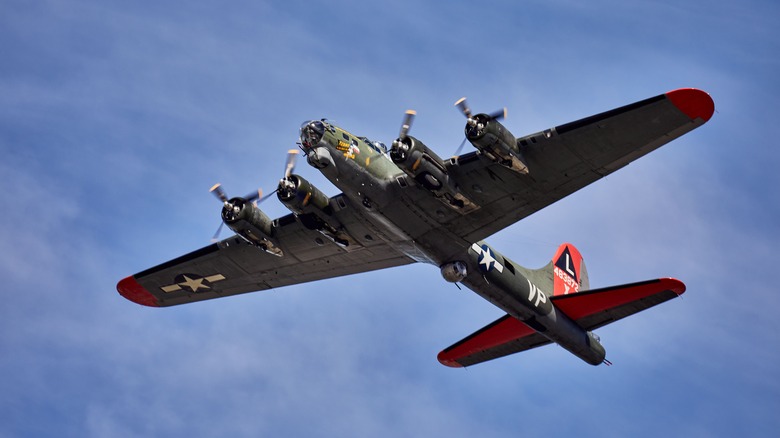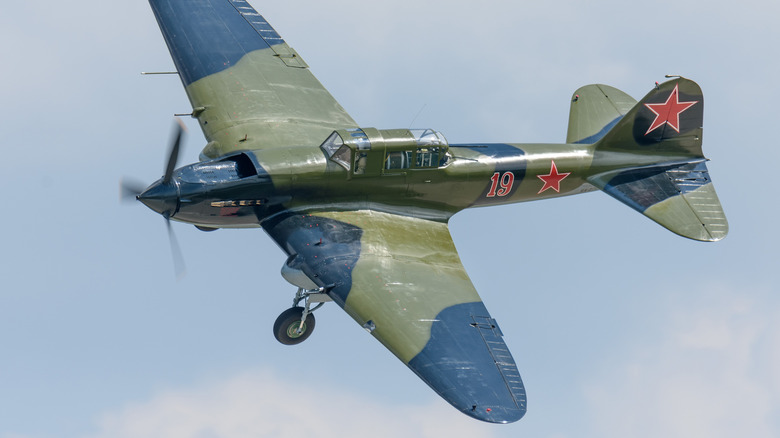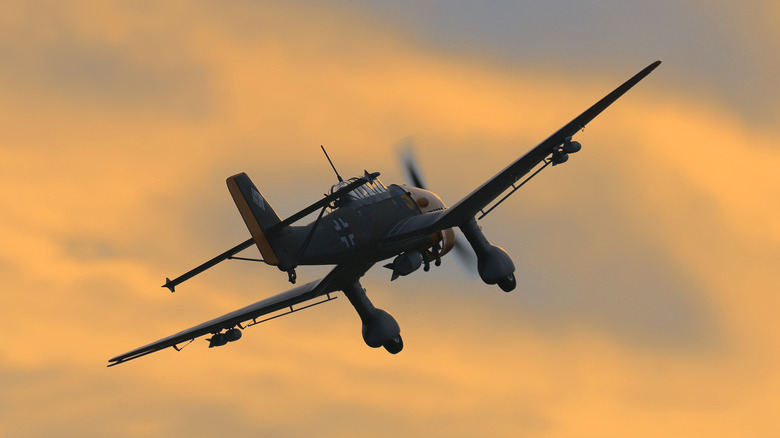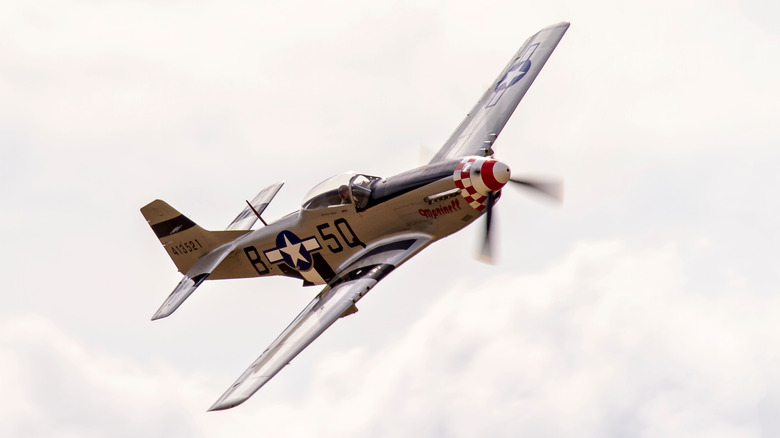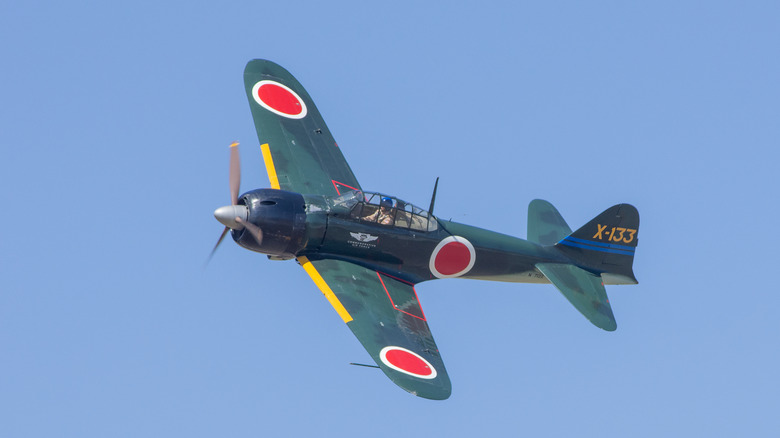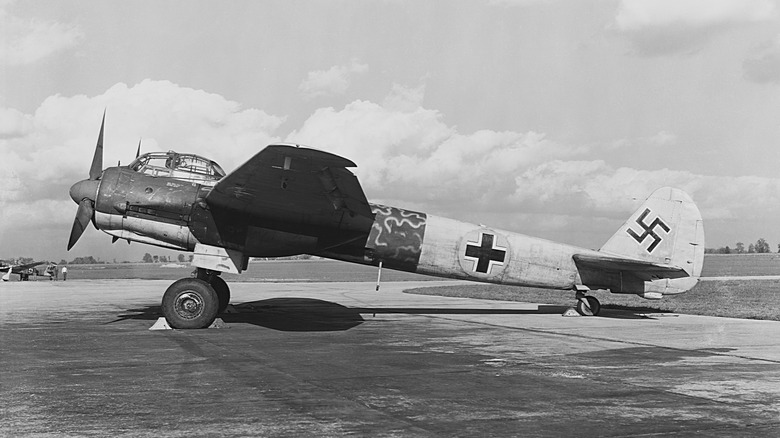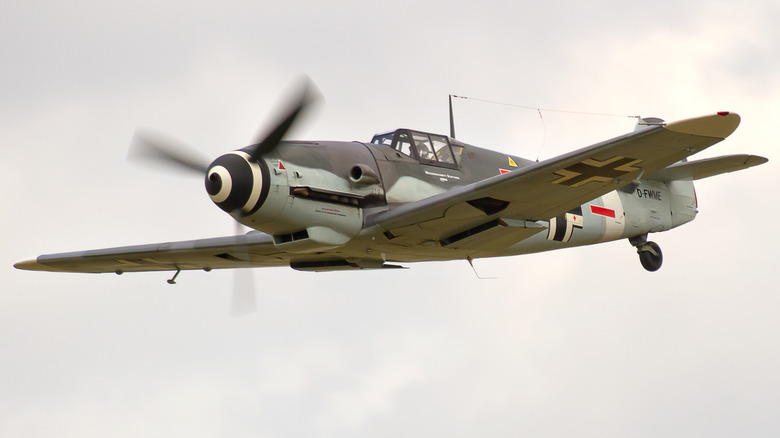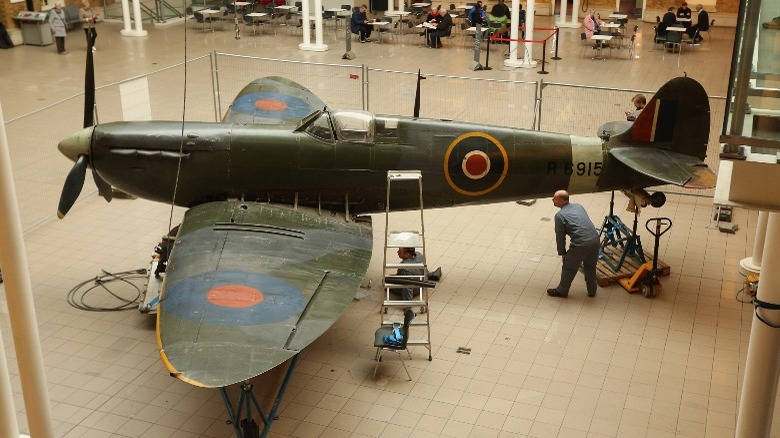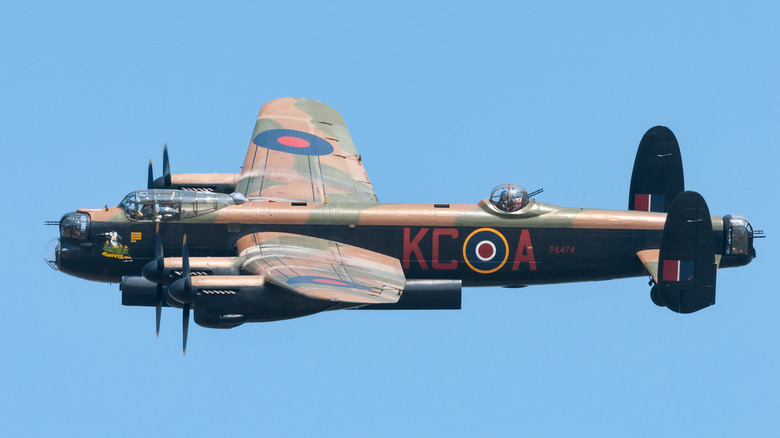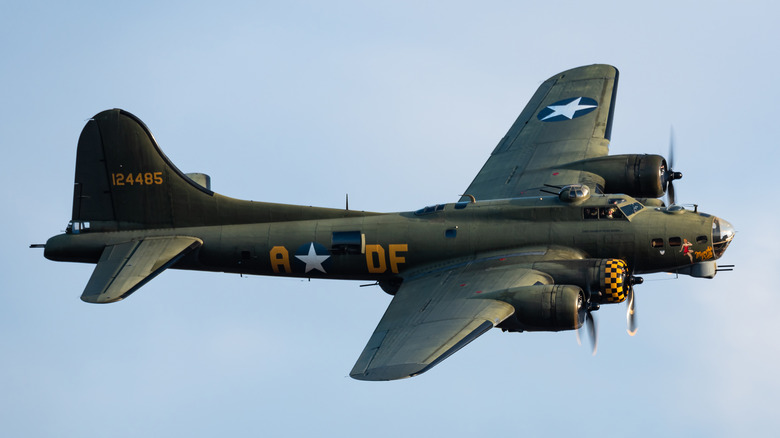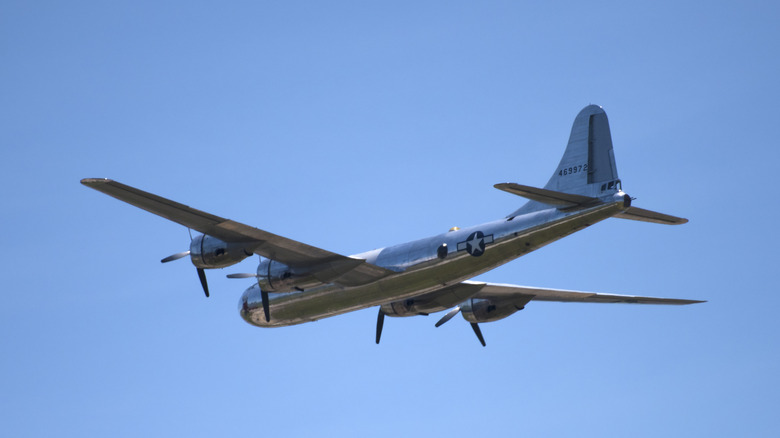The 10 Most Legendary Planes Of WW2 Ranked From Worst To Best
There was a dramatic change in the tactics of warfare with the outbreak of World War II. New technologies altered the way that battles were fought, and aircraft, in particular, were a more crucial component than in any previous conflict. There was a rush to improve each regiment's fleet as dominance over the skies became more essential to victory. This resulted in significant advancements in aviation, including the development of jet engines, the use of radar, and improvements in speed and efficiency.
Most notable, however, is how aircraft helped steer the war toward its conclusion. From the strategic bombing of European cities and the dog fights of the Battle of Britain to the attack on Pearl Harbor and the Pacific campaigns against the fearsome Kamikaze, the impact of warplanes cannot be overestimated.
Many types of aircraft were deployed in World War II, with fighters, dive bombers, heavy bombers, transporters, and reconnaissance units playing both pivotal and supporting roles to achieve victory in the skies. Here we identify and rank those planes that had the most significant effect on the outcome of the war, considering their firepower and payload, efficacy, and legacy.
Ilyushin Il-2
The Battle of Stalingrad was a different conflict from any other in World War II. At over five months, it is the longest and bloodiest in recent history, culminating in the death or injury of nearly two million people, leaving many more missing or captured. The Ilyushin Il-2 was the chief ground attack aircraft deployed by the Soviet Army to help maintain superiority above the devastated city at the banks of Russia's Volga River. Joseph Stalin himself described it as being as essential as air and bread to the Red Army campaign.
Given the nicknames the "Hunchback" for its bulbous cockpit and the more flattering "Flying Tank" for its heavy armor, the Ilyushin Il-2 was a single-engine monoplane with a crew consisting of a pilot and rear gunner. Having demonstrated its abilities in ground attacks during the Battle of Kursk, it went on to prove its value in aerial combat above Stalingrad by eliminating the Junkers Ju 52 transport planes attempting to resupply the besieged German troops below.
The Ilyushin Il-2 was instrumental in the Soviets' triumph in the Caucasus. This catastrophically depleted German morale, power, and resources, ultimately turning the tide of the war as the Allies claimed victory on the Eastern Front. But despite its tenacity, the Ilyushin Il-2 suffered many losses to dedicated fighter planes, including the Messerschmitt Bf 109, as it was often outperformed in both speed and agility during combat.
Junkers Ju 87
As one of the most sinister aircraft to serve in World War II, the Junkers Ju 87, otherwise known as the "Stuka," was a dive bomber notable for its shallow V-shaped wings. It was fitted with sirens in its undercarriage, and their high-pitched whine heralded its terrifying descent as it dived to deliver its deadly payload. It would perform dives at an angle of 80 degrees until it was low enough to hit targets with incredible accuracy. This success rate was far higher than conventional attack bombers, with around 25 percent of its bombs on target.
The Stuka was powered by the Junkers Jumo 211D 12-cylinder engine, which produced an impressive 1,184 horsepower. Its armament was four 7.92-millimeter machine guns, and it carried a bomb payload weighing 1,800 kilograms. Despite its heavy cargo and an empty weight of over 6,000 pounds, it could climb to 26,000 feet and fly at over 250 miles per hour. With its range of over 370 miles, it posed a significant threat to southern England from across the Channel in occupied Europe.
The Junkers Ju 87 consistently proved its worth as the most effective dive bomber in the German fleet during the invasion of Poland, the Battle of Britain, the Battle of Normandy, the North Africa campaign, and the Eastern Front. While it showed vulnerability at relatively low speeds when pulling out of a dive, suffering significant losses as a result, as an instrument of psychological warfare, the screaming Stuka was unsurpassed.
North American P-51D Mustang
The P-51D Mustang recently became a fixture in the public consciousness as the classic plane flown (and owned) by Tom Cruise in "Top Gun: Maverick." But its service history is far more interesting as the United States' notorious single-engine fighter bomber, which would prove invaluable in providing air support to heavy bombers like the B17 Flying Fortresses on their dangerous sorties deep inside Germany's borders.
The P-51D Mustang was notable for its 1,650-mile range as a fighter plane, made possible by adding external fuel tanks upon its wings. This helped alleviate the difficulties placed on long-range heavy bombers as they previously had no escort when returning from a sortie, allowing enemy fighters to pick them off en route back to base.
The Mustang saw considerable action during its short tenure in World War II, although it only debuted in early 1944. Notable of these was "Big Week," when its pilots decimated 17% of the Luftwaffe fighter fleet while shepherding the United States Army Air Force and Bomber Command during their tactical bombing of aircraft factories. It went on to fight valiantly in the D-Day offensive. However, the P-51D Mustang was relatively late to the party; hence it ranks lower than some long-serving stalwarts of World War II.
Mitsubishi A6M Zero
The Mitsubishi A6M Zero might have played a more significant role than any other fighter in a single sortie during World War II. This snub-nosed compact carrier-based plane was named the "Zero" after year zero in honor of Japan's first emperor's ascension to power 2,600 years before its launch. This outlines the long Japanese tradition as a nation skilled in combat and weaponry.
The Zero was incredibly nimble, well-equipped, and lightweight, with its designer Jiro Horikoshi using aluminum and plywood instead of steel as a weight-saving measure. A zinc-aluminum alloy was specially concocted for more stressed components, making this a meticulously-designed plane, delivered in a timely manner by 1940, having gone into production in 1937. Its 14-cylinder 1,130 horsepower engine propelled it to a top speed of 350 miles per hour, and its armament consisted of two 7.7-millimeter machine guns and two 20-millimeter cannons, with its two notorious 132-pound bombs beneath each wing.
The Mitsubishi Zero will forever be remembered as the plane that was instrumental in bringing the United States into World War II. On December 7th, 1941, under the attack signal, "Tora! Tora! Tora!" the Japanese launched their assault on Pearl Harbor, with the fleet of Zeros raining mayhem from above, strafing the docks with gunfire and devastating the U.S. Navy fleet with bombs. They quickly gained a reputation among the deadliest aircraft as the United States immediately declared war on Japan. Just three days later, the U.S. was also at war with Germany.
Junkers Ju 88
The Junkers Ju 88 was initially intended to be a fast bomber to complement the Heinkel He 111 and He 177 heavy bombers and Junkers Ju 87 dive bombers in its fleet. However, it proved far more versatile due to its high speed and exceptional handling, which enabled it to adopt roles as a night fighter and reconnaissance and anti-shipping aircraft.
The Ju 88 was powered by two 12-cylinder Junkers Jumo 211 engines, similar to that which powered the "Stuka," which produced 1,350 horsepower and pushed it to almost 300 miles per hour. It was well armed, with two 7.92-millimeter machine guns in the nose, two to the rear, and two in a gondola that was precariously slung underneath. It carried a bomb payload of over 4,400 pounds, despite its relatively small size of 47 feet in length and a wingspan of 65 feet.
With its versatility and adaptability, the Junkers Ju 88 saw action in the Mediterranean, on the Eastern Front, and over the Atlantic, where it supported U-boats from above. It provided a solid backbone for the Luftwaffe's operations and was produced in many variants. It eventually had the second-highest production number of all bombers ever built, with 14,676 in total.
Messerschmitt Bf 109
When historians talk about Messerschmitts, they usually refer to the Bf 109. This plane was more pivotal than any other in Germany's battle for air supremacy over the skies of Europe. As a single-seat interceptor, it played an essential role during the initial years of World War II, during the Blitzkrieg raids over England and the Battle of Britain.
Initially conceived in the 1930s, the Bf 109 was in constant development throughout the war. Pitted against the Supermarine Spitfire and, later, the P-51D Mustang, Germany's chief scrapper had to be a tour de force, and it was. Its power unit was a Daimler-Benz 12-cylinder beast that delivered 1,455 horsepower and a top speed of almost 400 miles per hour. Its range was considerable at over 500 miles, and it could fly to nearly 40,000 feet. Armaments were a pair of 13-millimeter machine guns, a 20-millimeter cannon, a single 550-pound bomb, and a couple of rockets for good measure.
The Messerschmitt Bf 109 was in service throughout the war, with over 32,000 units manufactured, more than any other fighter plane in history. It was also brutally efficient, becoming the plane associated with the most kills, making this one of the most notorious ever to have served in any conflict.
Supermarine Spitfire
The Supermarine Spitfire has become something of a monument to British resolve during the early years of World War II. Europe was overcome by the Axis Powers, and having been beaten back across the Channel at the battle of Dunkirk, Great Britain was highly vulnerable to incessant Luftwaffe attacks from above. This came to a head in 1940 with the Battle of Britain, as the future of Europe pivoted on the performance of two fighter planes, the Hawker Hurricane and the superior Supermarine Spitfire.
The Mark I Spitfire, as used in the Battle of Britain, featured a Rolls Royce Merlin powerplant that produced 1,030 horsepower. It had a top speed of 364 miles per hour and could climb to 34,500 feet. It had eight forward-facing machine guns, which proved highly effective when pitted against its primary foe, the notorious Messerschmitt Bf 109.
The Supermarine Spitfire reigned the skies during the battle of Britain as it shot down 529 enemy aircraft, effectively regaining allied control of the air and keeping Britain in the war. It went on to succeed further afield from Europe to the Mediterranean and Pacific theatres of war. In all, over 20,000 Spitfires were built in different variants, of which almost 30 are still airworthy, as an enduring testimony to the quality of this fighter plane.
Avro Lancaster
The Avro Lancaster entered service in 1942 and quickly became the Royal Air Force's primary heavy bomber for the remainder of World War II. At the time of its conception, the United States was yet to join the war with its exceptional bombers. Britain, therefore, required a long-range aircraft to carry out precision raids far behind enemy lines in daylight and, predominantly, under cover of darkness.
The Avro Lancaster was initially fitted with four 1,280 horsepower Rolls Royce Merlin engines, similar to those used on the Mark I Spitfire. It was characterized by its cavernous bomb bay, which could accommodate bombs of up to 12,000 pounds in weight, and was recognizable for its twin fins at the tail. It was almost 70 feet long with a 102-foot wingspan and weighed up to 68,000 pounds with a full payload.
While the Avro Lancaster was responsible for many raids over Europe, its most infamous sortie was the "Dam Busters" mission, when 19 RAF Lancasters used the bespoke "bouncing bomb." These skipped across water like skimming stones to destroy the dams of the Ruhr Valley, sabotaging enemy war production, as these generated significant power for industry.
Boeing B-17 Flying Fortress
The Flying Fortress was perhaps the most notorious bomber in World War II, as a large, dependable, and well-equipped workhorse that was used in countless daylight raids over Germany from 1941 onwards. Importantly, it was sturdy enough to take a pounding from the many anti-aircraft installments that littered occupied Europe, and there were many tales of it limping home, having lost engines to flak guns.
The first thing that may strike the casual observer of the Flying Fortress is how disproportionately large its tail is, yet this was an essential component that provided extra stability during high-altitude bombing runs. The rest of the plane was impressively sized, at around 75 feet in length, with a 104-foot wingspan. Its armament consisted of thirteen 0.50-caliber machine guns and a bomb payload weighing up to 9,600 pounds. It had four 1,200-horsepower Wright engines, could reach speeds of up to 287 miles per hour, had a range of 3,750 miles, and could reach an altitude of 35,600 feet.
Few planes worked harder than the Flying Fortress and its crew. Between the RAF's Bomber Command and the U.S. Army Air Force, the bombing raids were incessant. Each plane was required to complete 25 missions, and despite its sturdy build and skilled crew, only 36% would survive the first year. Yet the B17 was deadly in return, as Flying Fortress fleets successfully completed many daring raids deep inside Germany's heartland, which included the infamous bombing of Dresden that decimated the city.
Boeing B-29 Superfortress
Few planes are as notorious as the Boeing B-29 Superfortress. At the time of its production, it was the world's most sophisticated bomber, outclassing even the formidable Flying Fortress, as it could fly higher, faster, and further. It represented a new era in aviation technology, as it utilized new avionics, armaments, and propulsion systems, and was timely in its conception, a full eight months before the attack on Pearl Harbor.
The Superfortress had impressive specifications. It was 99 feet long and was powered by four substantial Wright R-3550 engines, producing 2,200 horsepower each. These enabled a maximum speed of 365 miles per hour, and it had a range of 5,830 miles. Its payload varied between regular bombs, mines, incendiary bombs, and the recently-developed nuclear weapons with which it became most closely associated.
Three Boeing B-29 Superfortresses, Enola Gay, Bockscar, and The Great Artiste, infamously delivered the "Little Boy" atomic bombs to Hiroshima and Nagasaki. Whether the desired result was to end the Japanese conflict or demonstrate U.S. military superiority over the Soviets, they succeeded either way. Modern aviation technology was instrumental in starting the war in the Pacific, with the Mitsubishi A6M Zero at Pearl Harbor in 1941, and also in ending it with the B-29 Superfortress and the bombing of Japan in 1945. It was a testament to the fact that after World War II, warfare would never be the same again.
